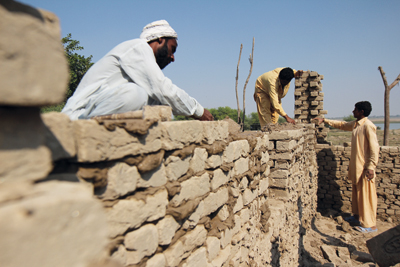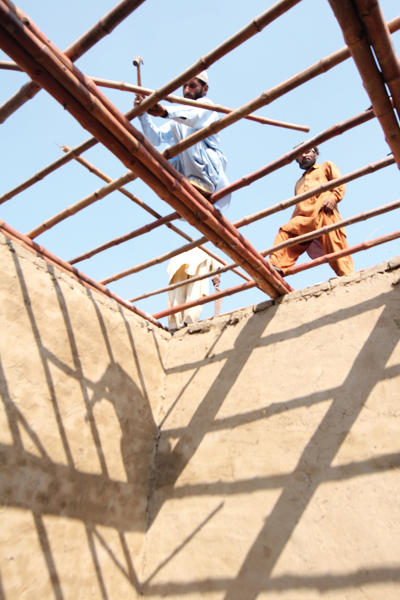|
Yasmeen Lari outside a women’s centre in Sindh, Pakistan. It is built on stilts to withstand floods |
||
|
Al Jazeera’s documentary series adopts a wide definition of rebel – and indeed architect – but is all the more interesting for it, says Hana Loftus It’s quite something that Al Jazeera is responsible for the most interesting architecture series on TV for a while, and credit to commissioning editor Flora Gregory for investing in this six-parter. Rebel Architecture’s pitch seems simple: the antithesis of the starchitect cliché, it follows relatively unknown architects whose work addresses the needs of the underprivileged in some of the world’s most challenging situations. The six architects chosen have, in fact, little in common. The first in the series – Spanish architect Santiago Cirugeda – fits the “rebel” label perfectly, with his romantic, shoe-string brand of guerilla activism building unlicensed structures for communities and artist collectives in crisis-hit Spain. But the second – Pakistani architect Yasmeen Lari – is an establishment figure in her own right, responsible for huge commercial and public buildings before she turned her focus to housing and community projects in remote rural areas. Not all of the subjects even build anything: Israeli Eyal Weizman may be trained as an architect, but his work is the mapping and analysis of architecture’s function as a form of “slow violence” in the Israeli–Palestinian conflict. Vietnamese architect Vo Trong Nghia hardly fits the “rebel” billing at all, with his crisp white shirts and work on huge commercial housing tracts, bars and hotels.
Workers build a flood-proof mud brick house to Yasmeen Lari’s design Each episode in itself is interesting but not startling, and the choice of architects can seem a little random (perhaps Rural Studio and Architecture for Humanity were too “starry”, or too collective, but that seems a feeble excuse). However, the variety of the subjects encourages the viewer to question what really makes an architectural rebel, or architecture for the 99 per cent. The lack of a narrative voice also helps – the films follow each architect as they go about their work and are voiced solely by the conversations and remarks that occur along the way. These tensions make the series as a whole more interesting than its anti-starchitect strapline. The episode featuring Weizman takes this ambiguity on to more unsettling ground. Here, the architecture, not the architect, appears to be the rebel: the security walls, hilltop settlements, highways and surveillance towers of the Israeli occupation erupt into Palestinians’ everyday lives almost as autonomous beings, concrete soldiers in In contrast, it’s hard to tell how intentional the critique of figures like Vo Trong Nghia is meant to be, with his well-meaning but limp attempts to prototype low-cost homes for his less fortunate compatriots. (If he’s not a credible version of a rebel architect, why devote a whole episode to his work?)
A roof is installed on one of Lari’s mud huts The final episode in the series, and the most overt in terms of a message, follows two very different characters in the Rio de Janeiro favela of Rocinha. The principal subject is Ricardo de Olivera, a pedreiro – or basic builder – constructing the apartments and shops for favela dwellers, acting as architect, engineer, contractor and sometimes client, as he struggles to complete his own house alongside his paid work. The other – the ageing, patrician Luis Carlos Toledo – hoarsely recounts his efforts to masterplan improvements to the favela. “I’m sure everyone in Rocinha is proud to have a footbridge by Oscar Niemeyer,” he states without irony, although he deplores the implementation of a cable car over his plans for basic sanitation. But as a mere “builder” he swims against the tide of national politics and class structures. Compared with him, the series suggests that even the committed Cirugeda, or the engaging Nigerian architect Kunlé Adeyemi, act from a position of privilege, however much they may rebel against traditional modes of architectural practice. If that is the intended “take-home”, it is a reductive one that denies that the architecture profession can play any meaningful social role. |
Words Hana Loftus
Images: Al Jazeera English |
|
|
||



















